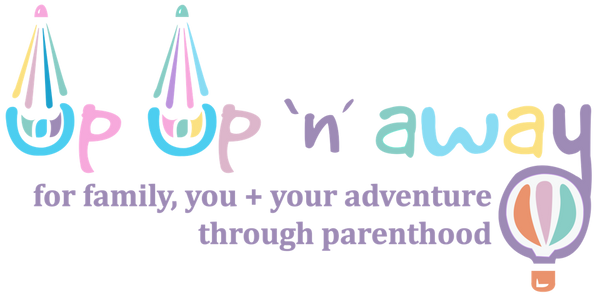According to health experts, breastmilk (or formula) is all babies need until they’re six months old. Breastfeeding may continue until around 2 years of age; however, after six months breast milk alone is no longer sufficient to meet baby’s nutritional requirements and other foods and liquids are needed in addition to breast milk. This is also known as complimentary feeding.
Introducing solids
Once your little one is around six months it is recommended to start with small amounts of food and increase the quantity, food consistency and variety as your baby grows, while maintaining frequent breastfeeding/formula feeding. Introducing foods one at a time, starting with a little bit of very milky baby cereal (mixed with breastmilk or formula) can help identify food allergies or intolerances.
Here is a quick guide to what and when to introduce foods:
6 months: Your baby is ready to try a world of different tastes and flavours. Along with baby cereal, available from the supermarket, you could also offer cooked pureed fruit (apple, pear) or vegetables (potato, pumpkin, carrot). See our homemade baby foods guide for how to make your own. After six months, you may introduce small amounts of boiled and cooled water.
7 months: Keep using the above foods. Try introducing pureed meat and toast fingers or sugarless rusks.
8 months: It’s time for a bit more coarsely mashed food, like minced meat, chicken and rice. You can also introduce finger foods such as soft, chopped fruit, soft-cooked veggies, bread and toast, pasta, grated cheese (pasteurised), yoghurt and custards.
12 months: At this age, your baby is ready to eat a little of what the rest of the family is eating – as long as you cut food into small pieces. Baby can also drink plain pasteurised milk at this time. Supervision is vital, to gauge your baby’s reactions to different foods, how they cope with eating them, what they like and dislike and to ensure their safety. Avoid foods which may cause choking, and keep in mind their nutritional needs and only provide them with healthy nutritional snacks. You may notice your baby showing an interest in the food you are eating, and they may indicate they would like to taste.
All babies are different, and this time frame is just a guide. There’s no point trying to force a child to eat anything. If food gets knocked back one week, try it again next week. Babies can be offered a new food many times before deciding to try it. Your baby will develop their tastes and what they like and don’t like as they experiment with the different flavours and textures you provide them. Some mothers Breastfeed until their baby is two years old while incorporating Complimentary Foods into their daily diet. Some formula-fed babies will continue to drink formula alongside Complimentary Foods or may wean off milk and exclusively eat solids and drink cows’ milk and or/water before their second year.
How much should I feed my baby?
** The World Health Organisation recommends a baby receive approximately 600 kcal per day at 6-8 months of age, 700 kcal per day at 9-11 months of age, and 900 kcal per day at 12-23 months of age**
Once your baby is eating well, you may consider a meal schedule. An example is:
- Early morning – breastfeed/bottle.
- Mid-morning – breakfast and breastfeed/bottle.
- Early afternoon – lunch and breastfeed/bottle.
- Early evening – dinner and breastfeed/bottle.
- Late evening – breastfeed/bottle (if needed).
As a general guideline, along with 4-5 milk feeds a day, you may wish to feed an average healthy breastfed baby 2-3 snacks a day at 6-8 months and 3-4 snacks a day at 9-12 months. You can reduce this to three milk feeds as your baby starts to eat more solid food (6-9 months). Of course, your baby’s own milk intake might vary from this. How much soft solid food to give your baby will depend on how much breastmilk/formula they are getting. If you produce a lot of milk and they are putting on weight, then that may affect how much solid food to give them alongside your milk.
Tips for complimentary feeding
It is important to note than non-breastfeeding mothers need to be aware of their baby’s fluid intake. As Breastmilk is 90% water, breastfed babies receive their recommended water intake but formula-fed babies will require additional water to drink from around 6 months – giving them water to sip frequently during the day should ensure they do not become dehydrated.
Try not to worry if your child is a fussy eater. A relaxed approach is the best way to establish good habits and avoid later problems. As a parent, you decide what healthy foods to offer your baby, and your baby decides how much. You can also expect a bit of mess as children learn to feed themselves.
When babies are 9-12 months old, you can put healthy leftovers in a blender and reduce to a textured pulp. Spoon into ice cube trays or small plastic containers and freeze for quick meals later in the week.
You can help your child establish healthy behaviour, eating and activity habits from birth. When children eat lots of different healthy foods, they get the nutrients they need for growth and development, build healthy habits for a healthy life and avoid becoming overweight or developing childhood obesity.
This information is a general guide only. It’s important to remember to do what’s right for you and baby and get any advice from your healthcare professionals.
Raisingchildren.net.au. (2019, May 10). Breastmilk and breastfeeding: benefits. Retrieved from https://raisingchildren.net.au/babies/breastfeeding-bottle-feeding-solids/about-breastfeeding/breastmilk-breastfeeding-benefits
Raisingchildren.net.au. (2020, May 18). Introducing solids: why, when, what and how. Retrieved from https://raisingchildren.net.au/babies/breastfeeding-bottle-feeding-solids/solids-drinks/introducing-solids

